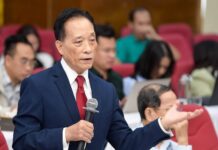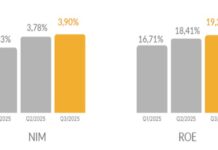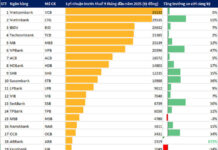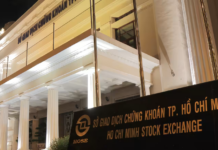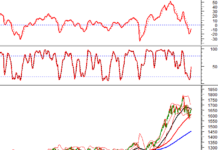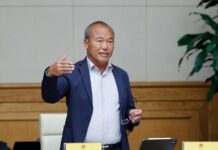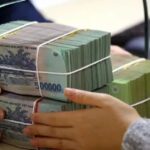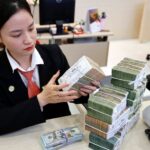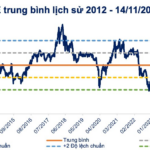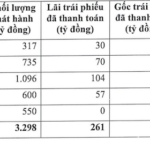At the seminar titled “Gold Trading Floor: Market Transparency and Macroeconomic Stability,” organized by Tien Phong Newspaper, Dr. Nguyen Tri Hieu, an economic expert, stated that Decree 232 was enacted to establish a transparent gold market management mechanism, aligning with the principles of a market economy.
According to him, the core of this decree does not lie in administrative intervention but in the government’s shift from a monopolistic role to a regulatory one, ending the previous monopoly on gold imports, production, and distribution.

Dr. Nguyen Tri Hieu speaking at the seminar (Source: Tien Phong).
Dr. Hieu noted that Decree 24 previously stabilized the gold market for an extended period due to the government and the State Bank’s stringent management. However, the current market demands a regulatory mechanism without subsidies or monopolies, which is the essence of Decree 232.
He also observed that Vietnam holds a significant amount of gold among its citizens, estimated at hundreds of tons. Mobilizing this resource cannot be achieved in the short term but requires a long-term, cautious approach based on market trust.
Internationally, gold prices are highly volatile due to macroeconomic factors such as high inflation in the U.S., unstable growth, and policy uncertainties. These factors reinforce gold’s role as a safe-haven asset.
“International gold prices have surpassed $4,000 per ounce and could return to $4,200 per ounce by year-end. Although Vietnam’s market is not fully integrated with the global market, it remains significantly impacted, leading to unusual domestic fluctuations,” said Dr. Hieu.
He noted that over the past year, global gold prices rose by approximately 56%, while domestic gold prices increased by up to 80%. Consequently, shifting from real estate, stocks, or savings to gold is understandable: real estate requires substantial capital, stocks demand knowledge and carry high risks, and bank interest rates struggle to compete with gold’s recent returns. “The public’s demand for gold accumulation and investment is justified,” he emphasized.
Dr. Hieu also believes that gold in Vietnam serves not only as a speculative asset but also as a means of financial accumulation and insurance. In households without social or health insurance, gold acts as a “nest egg” for emergencies. Its high liquidity, ease of transaction, divisibility, and privacy align with traditional Vietnamese financial habits.
However, he warned that storing physical gold at home is a significant economic inefficiency. The estimated gold held by citizens, equivalent to about 8% of GDP, remains outside productive use. Long-term, Vietnam should adopt a gold securitization model, allowing citizens to hold gold assets as certificates equivalent to physical gold. The key prerequisite is trust: citizens must believe these certificates are absolutely secure and hold real value.
“With Decree 232 and the goal of building a safe, transparent, and competitive gold product ecosystem, I believe Vietnam can achieve three objectives: ensure transparent physical gold distribution; combat speculation and smuggling; and develop internationally standardized gold investment products, moving toward gold securitization to bolster the economy,” he stated.
According to the expert, Vietnam could mobilize 300–500 tons of gold from citizens into the economy, but this requires time and patience. “By building market trust, reducing monopolies, expanding participation for businesses and banks, ensuring transparent gold circulation, and providing secure gold investment products, the gold held by citizens will naturally and voluntarily flow into the system,” Dr. Nguyen Tri Hieu affirmed.
Gold Shops in Ho Chi Minh City Suddenly… Deserted
In recent days, numerous gold shops in Ho Chi Minh City have seen a noticeable decline in foot traffic. Observers suggest that the narrowing gap between official gold prices and those on the black market has diminished the appeal for buyers and sellers looking to profit from price differences.
Banks Hike Deposit Interest Rates to Stabilize Exchange Rates and Balance Capital Flows
Interest rates on bank deposits have rebounded as a strategic move to stabilize exchange rates and balance capital flows, reflecting the mounting pressures from the foreign exchange market as 2025 draws to a close.







